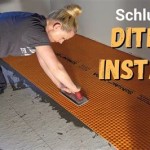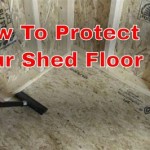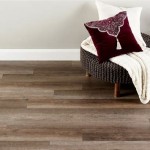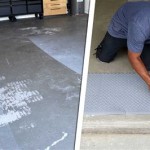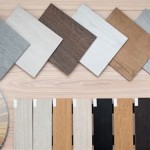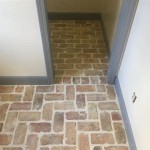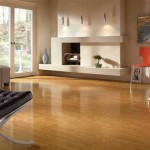How To Repair Termite Damaged Wood Floors in Portland, Oregon
Termite damage to wood floors is a significant problem for homeowners in Portland, Oregon. The damp climate and abundance of mature trees create an ideal environment for these destructive pests. Identifying and addressing termite infestations promptly is crucial to minimize damage and prevent costly repairs. This article outlines the process of repairing termite-damaged wood floors, focusing on the specific considerations relevant to the Portland area.
The first step in any repair is a thorough assessment of the damage. This involves identifying the type of termite, evaluating the extent of the infestation, and determining the structural integrity of the affected wood. Ignoring the early signs of termite activity, such as hollow sounds, mud tubes, or discarded wings, allows the problem to escalate, requiring more extensive and expensive repairs later on.
Portland's unique environmental factors play a key role in termite activity. The relatively mild, wet winters and warm summers provide a year-round breeding ground for termites, particularly subterranean termites. Regular inspections, proper ventilation, and preventative treatments are essential for protecting wood floors from these opportunistic pests.
Identifying Termite Damage in Wood Floors
Recognizing the signs of termite damage is critical for timely intervention. Unlike other types of wood decay, termite damage often occurs from the inside out, making it difficult to detect in its early stages. Homeowners should be vigilant and look for specific indicators that suggest a termite infestation.
One of the most common signs is the presence of mud tubes. Subterranean termites, the most prevalent type in Portland, construct these tubes to travel between their underground colonies and the wood they consume. These tubes are typically found along foundation walls, in crawl spaces, or on exterior surfaces of the building. Breaking open a mud tube will reveal live termites if the infestation is active.
Another telltale sign is wood that sounds hollow when tapped. Termites consume the interior of the wood, leaving a thin, fragile outer shell. This hollow sound indicates that the wood's structural integrity has been compromised. Probing the wood with a screwdriver or awl can further assess the extent of the damage. If the tool easily penetrates the wood, it is likely that termites have extensively damaged the interior.
Swarmers, or winged reproductive termites, are another indication of a mature colony nearby. These termites emerge in the spring and summer months, seeking to establish new colonies. Finding swarmers inside the house or near the foundation is a clear sign of a termite problem. Discarded wings near windowsills or doors are also evidence of swarmer activity.
Visible damage such as blisters on wood flooring, buckling, or crumbling wood can also indicate termite activity. It is important to note that this type of damage is usually indicative of a more advanced infestation. Small holes in the wood surface, often filled with mud-like material, are also common signs. These holes are points where termites have entered or exited the wood.
Finally, any unexplained sawdust-like substance near wood floors or other wooden structures can be a sign of termite activity. This "frass" is termite waste, which they often expel from their tunnels. While it may resemble sawdust, it typically has a different texture and color.
Steps for Repairing Termite-Damaged Wood Floors
Repairing termite-damaged wood floors is a multi-step process that requires careful planning and execution. The specific steps will vary depending on the extent of the damage and the type of wood flooring, but generally involve removing damaged wood, treating the surrounding area, and installing replacement materials.
The first step is to remove all damaged wood. This usually involves cutting away the affected sections of the floor with a saw or other specialized tools. It is crucial to remove all traces of infested wood to prevent the termites from spreading to other areas. When removing the damaged wood, it is important to wear appropriate protective gear, including gloves, a mask, and eye protection.
After removing the damaged wood, the surrounding area must be treated to eliminate any remaining termites. This can be done with chemical treatments such as borate solutions or other termiticides. These treatments are designed to kill termites on contact and prevent future infestations. It is essential to follow the manufacturer's instructions carefully when applying these treatments, and to take precautions to protect yourself and your family from exposure to harmful chemicals. In Portland, it is recommended to consult with a licensed pest control professional to ensure that the appropriate treatments are used and applied safely.
Once the area has been treated, the next step is to repair or replace the damaged wood. This may involve patching small areas with wood filler or installing new sections of flooring. When installing new flooring, it is important to use materials that are resistant to termites, such as pressure-treated lumber or composite wood products. It is also important to ensure that the new flooring is properly installed and sealed to prevent moisture from entering the wood, which can attract termites.
For patching small areas, a wood filler specifically designed for repairing damaged wood is recommended. The filler should be applied in thin layers, allowing each layer to dry completely before applying the next. Once the filler is dry, it can be sanded smooth and painted or stained to match the existing flooring.
Replacing larger sections of flooring requires more skill and precision. The new flooring must be cut to size and carefully installed to ensure a seamless fit. It is also important to use the correct type of fasteners, such as nails or screws, to secure the new flooring in place. The new flooring should be properly sealed to prevent moisture from entering the wood.
In cases of extensive damage, it may be necessary to replace the entire floor. This is a more involved process that requires removing all of the existing flooring and installing a new subfloor. It is important to ensure that the subfloor is level and structurally sound before installing the new flooring. A professional contractor should be consulted for this type of repair.
Preventing Future Termite Infestations in Portland
Preventing future termite infestations is an ongoing process that requires vigilance and proactive measures. There are several steps that homeowners in Portland can take to protect their wood floors from these destructive pests.
One of the most important steps is to eliminate sources of moisture. Termites are attracted to damp wood, so it is essential to keep the area around the foundation dry. This can be done by ensuring that gutters and downspouts are properly functioning and that the ground slopes away from the foundation. Any leaks or plumbing problems should be repaired promptly. Proper ventilation in crawl spaces and basements is also essential to prevent moisture buildup.
Another important measure is to minimize contact between wood and soil. Termites can easily tunnel through the soil to reach wood, so it is important to keep wood structures, such as decks and fences, at least six inches above the ground. Wood piles should be stored away from the house and should be elevated off the ground. Mulch should be kept away from the foundation, as it can provide a moist environment for termites. Replace wooden support posts with concrete or metal alternatives.
Regular inspections are crucial for detecting termite infestations early. Homeowners should inspect their homes at least once a year for signs of termite activity. This includes checking for mud tubes, hollow-sounding wood, and swarmers. A professional termite inspection can provide a more thorough assessment of the property. These annual inspections and continued vigilance help prevent larger and costly repairs.
Preventive treatments can also be used to protect wood floors from termites. These treatments typically involve applying a termiticide to the soil around the foundation or to the wood itself. There are a variety of termiticides available, including liquid treatments, baits, and wood preservatives. It is important to choose a treatment that is appropriate for the specific type of termite and the specific situation. A licensed pest control professional can recommend the best treatment options for your home.
Finally, proper maintenance of wood floors is essential. This includes regularly cleaning and polishing the floors to prevent moisture from penetrating the wood. Any cracks or gaps in the flooring should be sealed to prevent termites from entering. Using wood sealants and finishes with termite-resistant properties can also provide added protection.
By taking these preventive measures, homeowners in Portland can significantly reduce the risk of termite infestations and protect their wood floors from damage. Early detection and prompt treatment are the keys to preventing costly repairs and maintaining the value of the home.

Termite Damage Repair Contractor Contact Us Get It Repaired

Replacement Of Mold Damaged Wood In Portland Vancouver M Repair Damage Oregon

Termite Damage In Crawl Spaces Portland Vancouver M Oregon

Replacement Of Mold Damaged Wood In Portland Vancouver M Repair Damage Oregon

Warped Wood Floor Problems In Oregon Moisture Control For Portland Vancouver M Or Wa

Warped Wood Floor Problems In Oregon Moisture Control For Portland Vancouver M Or Wa

Termite Damage In Crawl Spaces Portland Vancouver M Oregon

Termite Control In Portland Or Vancouver Wa A

Can You Fix Damaged Hardwood Flooring Bessemeter

Termite Control In Portland Or Vancouver Wa A
See Also
